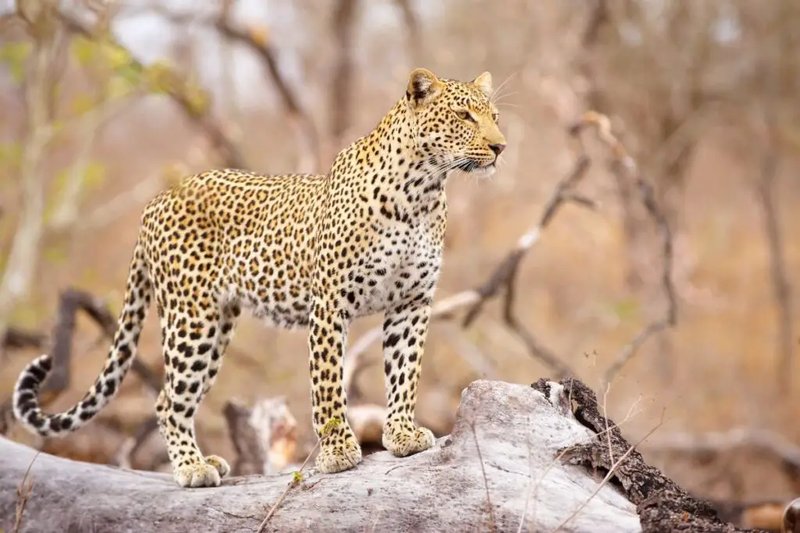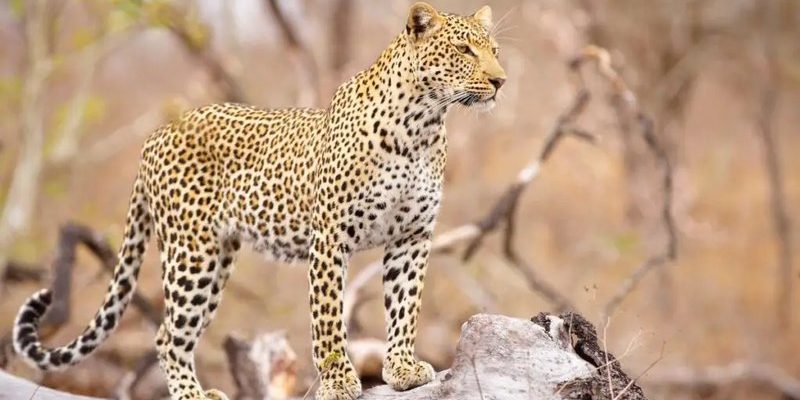
Imagine sipping your coffee while chatting about these amazing creatures. You might be wondering what makes a tiger special, or how these other animals compare. Well, each has unique characteristics, habitats, and behaviors that set them apart. So, let’s embark on this fascinating journey to discover the big cat relatives and impersonators of the mighty tiger!
1. Lion
The lion is often dubbed the “king of the jungle,” although they primarily live in savannas and grasslands. Like tigers, lions belong to the Felidae family and share a powerful build and large size. The most noticeable difference? Male lions sport a magnificent mane, making them easier to identify.
These animals are social creatures, forming prides that can include multiple females and their cubs. While tigers tend to be solitary, lions thrive in groups. Their roars can be heard from miles away, marking their territory. Imagine a group of lions lounging under a tree, while a lone tiger stalks its prey in the dense underbrush.
2. Leopard
Leopards are like the cool cousins of tigers, sharing a similar build but with a different style. Instead of the tiger’s bold stripes, leopards have rosettes—those beautiful, flower-like patterns on their fur. They’re incredibly adaptable and can thrive in various habitats, from savannas to rainforests.
One way to tell them apart is by their size and fur pattern. Leopards are smaller and generally weigh less than tigers. They’re also known for their climbing skills, often dragging their prey high into trees to protect it from scavengers. Picture a leopard resting on a branch, casually eyeing the ground below, while a tiger prowls through the undergrowth, stealthily hunting.
3. Snow Leopard
If you’ve ever seen a snow leopard, you know they look like a fluffy cloud rolling down the mountains. Their thick, soft fur is perfect for cold climates, unlike the tiger’s more robust coat suited for diverse environments. Snow leopards are adapted to high altitudes and are masters of camouflage in rocky terrains.
These big cats are elusive and mostly solitary, just like tigers. However, they have longer tails that help them balance on steep cliffs. The way they blend seamlessly into their surroundings is a sight to behold, just as a tiger slips through dense foliage with grace and stealth.
4. Cheetah
Cheetahs are the sprinters of the cat world. While they don’t share the same size or strength as tigers, their sleek bodies are built for speed. With their signature black tear marks under their eyes, cheetahs can reach incredible speeds of up to 75 miles per hour—much faster than a tiger’s impressive sprint.
One key difference is that cheetahs rely on their incredible speed rather than strength to catch prey. You can think of them as the “track athletes” of the big cat family. While a tiger might stalk and ambush its meal, a cheetah bursts into action, using its speed to outrun its target.
5. Jaguar
Jaguars are often mistaken for leopards, but they pack a powerful punch of their own. With a stocky build and a robust jaw, jaguars are known for their strength. They share a similar spotted coat with leopards but have larger rosettes with a central spot.
Jaguars primarily inhabit rainforests and have a penchant for swimming, which is uncommon among big cats. They often hunt from the water, surprising their prey in a way that even tigers might admire. Imagine a jaguar lounging by a riverbank, watching as a tiger elegantly maneuvers through tall grass on the other side.
6. Puma (Cougar)
Pumas, also known as cougars or mountain lions, are versatile like tigers but differ in size and appearance. They have a solid tan coat and a long tail, allowing them to maintain balance when navigating rocky landscapes. Unlike tigers, pumas are solitary and can be found in various habitats across North and South America.
Pumas are highly adaptable hunters, capable of taking down animals much larger than themselves. You might think of them as the “misfits” of the big cat family. While they don’t have the striking stripes of a tiger, they share similar hunting tactics and habitats in many regions.
7. Caracal
The caracal is a medium-sized cat with large tufted ears that give it a unique look. While they’re not as large as tigers, caracals are known for their impressive agility and leaping ability. They can jump up to 10 feet in the air to catch birds, showcasing their hunting prowess.
While caracals may not share a similar size with tigers, they are notable for their keen senses and incredible eyesight. Imagine a caracal in the tall grasses, crouched low and ready to spring into action. Its agile movements would remind you of a tiger stalking its prey, albeit on a smaller scale.
8. Asian Golden Cat
The Asian golden cat is somewhat of a hidden gem among big cats. With a sleek, golden coat and a size slightly smaller than a bobcat, it has similarities to tigers but remains elusive in the wild. These cats can change fur colors, ranging from golden brown to even grayish tones, making them tricky to spot.
Commonly found in Southeast Asia, their habitats overlap with tigers. However, unlike tigers, they thrive in forests and mountainous terrains. They rely on stealth and are known for being quite secretive, akin to the solitary nature of tigers.
9. Indochinese Tiger
Now, we can’t forget about the Indochinese tiger, which is actually a subspecies of the tiger. While they share the same family traits, Indochinese tigers are slightly smaller and darker than their Bengal counterparts. Their stripes are narrower and more closely spaced.
These tigers roam through the forests of Southeast Asia and are similar in behavior to the more common tiger species. However, their distinct patterns and adaptations to dense habitats are what set them apart. You might think of them as the “tiger’s cousin” living in a different neighborhood.
10. Siberian Tiger
Last but not least, the Siberian tiger is another subspecies that deserves a mention. Known for its thicker fur and paler color, this tiger is built for the cold climates of Russia’s forests. Its size can be quite impressive, making it one of the largest subspecies of the tiger.
Compared to other tigers, Siberian tigers have less pronounced stripes, which help them blend into their snowy surroundings. Picture a majestic Siberian tiger padding silently through the frost, a striking image that still evokes the essence of this powerful feline.
In conclusion, while the tiger is a standout in the big cat family, numerous other animals share similar traits and characteristics. From the regal lion to the agile caracal, each animal brings its flavor to the feline world. When you encounter these creatures, consider the unique features that set them apart—just as a good friend stands out in a crowd. Understanding their differences not only deepens our appreciation for these magnificent animals but also highlights the beauty of biodiversity in our world.

